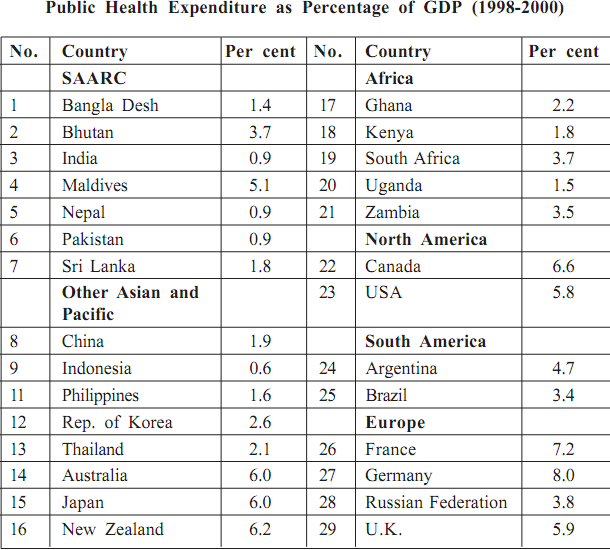Inequity
This refers to the needy sections (i.e. the poorest twenty percent of the population) receiving proportionately low share of public health spending. In most developing countries, it has been observed that the poorest 20 per cent of the population receive less than 20 per cent of the benefits from public spending. A distinction can be made between total health spending and spending on basic health care. The latter refers to spending on primary health services which are mostly needed by the poorest. Thus, if poor people are to benefit, more resources must go to primary health care.

Ideally, public spending on primary health care should vary inversely with the level of development of an economy. This is to say, as an economy develops it can afford to spend less on primary health services; or, till such time an economy is still developing, a larger share of public spending should go towards primary health services. One of the indicators reflecting on the health status and consequently the development of an economy is child mortality rate (i.e. number of children dying before attaining age-five). In countries where fewer than 70 out of 1000 children die before age five, the poorest 20 per cent receive more than 25 per cent of total spending on primary health care (HDR, 2003). In contrast, in countries where child mortality rates are between 70 and 140, the poorest 20 per cent get less than 15 per cent of public spending on primary health care. In still extreme cases i.e. in countries where the child mortality rates are higher than 140, the poorest 20 per cent account for less than 10 per cent of hospital use while the richest 20 per cent get around 40 per cent of public health care. Egalitarian spending, however, requires that public investment in health should be more on providing the basic health services needed by the poor.
The impact of inequity is more in rural areas where need for publicly funded health services is greater. There is severe shortage of medical personnel in these areas. The para medical personnel (comprising of nurses, trained birth attendants and community health workers) are regarded as the limbs and bones of the health system. Their ratio to doctors is considered to reflect the state of health services of the country. This is much adverse in developing countries as compared to the developed ones. For instance, in case of high achieving countries (with higher life expectancy and lower under-five mortality rate), the ratio of nurses to doctors (around the year 1990) was in the range of 4 to 10 (e.g. Zimbabwe 9.5; Thailand 4). The corresponding ratio for low achieving countries was below 2 (e.g. India 1.5, Bangladesh 1). Efforts to deploy medical personnel in underserved areas are usually unsuccessful. Measures suggested to redress such imbalances include:
(i) increasing the number of nurses, paramedics and community health workers;
(ii) using service contracts to require medical personnel to spend a certain number of years in public
service;
(iii) having donors fund some recurrent costs in order to have the most essential minimum number of health personnel and other supporting infrastructure of health.
Countries in Latin America, Philippines, Tanzania, Malaysia, etc. have successfully implemented some of these measures to achieve better equity standards in matters of health service delivery.